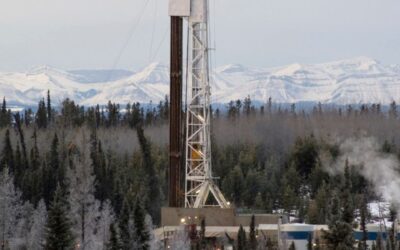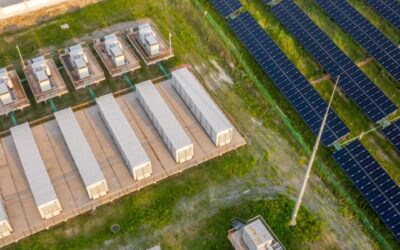Since launching Canada’s Net Zero Future last month, we’ve received great questions from fellow researchers and other people we’ve engaged with. While each conversation and correspondence has sparked different lines of inquiry, a number of questions have come up again and again. We’ve responded to those here. Please keep the questions coming, so we can keep the conversation going.
- If you had to sum up the whole report, what’s the takeaway?
First and foremost, that net zero is achievable. Our analysis identifies more than 60 possible pathways that reach Canada’s stated target of achieving net zero greenhouse gas emissions by 2050.
But getting there will require two types of solutions—safe bets and wild cards. Safe bets are no-regrets solutions that are commercially available today, such as energy efficiency measures, electric vehicles, and heat pumps. Wild cards, on the other hand, are solutions that are in the early stages of development, face potential barriers to scaling up, or may be unable to outcompete lower-cost solutions even when they do prove technically viable.
We find that the next decade is all about driving forward safe bet solutions, while at the same time supporting the development of wild cards so that they’re ready when we need them to drive deeper emissions reductions in the future. It’s too soon to say which ones will pay off, but the modelling shows we will very likely need some wild cards to come through to achieve net zero by 2050.
- Why are nature-based solutions considered a wild card?
Nature-based solutions, also referred to as “land use” in our analysis, cover a variety of practices to absorb carbon dioxide, such as:
- forest management practices, like boosting conservation for existing forests or planting new ones
- agricultural practices, such as no-till planting or mixing trees with agricultural land
- ecosystem management, by protecting or restoring grasslands, wetlands, and coastal ecosystems.
These solutions meet the “wild card” definition for a few reasons. First, there are concerns around the permanence of the emissions reductions from these solutions. Carbon stored in nature doesn’t necessarily stay there forever—for example, carbon sequestered in a forest can be released due to wildfire, drought, invasive pest species, logging, or urban development. In other words, the emissions sequestered through nature-based solutions can be reversed.
In addition, nature-based solutions may face barriers to scaling up since the huge land mass needed (especially for approaches like afforestation) may conflict with other land use priorities (like food production) and could have negative impacts on neighbouring ecosystems. And, critically, to move ahead at scale, these systems would also need to respect the inherent, treaty, and constitutionally protected rights of Indigenous Peoples, since these solutions would often be deployed on their traditional lands.
- What role does nuclear energy play? What about small modular reactors?
Short answer: our analysis does not assess the role of nuclear specifically. Instead, we looked at the role of non-emitting electricity broadly, which could include nuclear, as well as hydro, wind, solar, biofuels, geothermal energy, and natural gas paired with carbon capture utilization and storage (CCUS). As a whole, the use of non-emitting electricity grows across all of the paths to net zero we examine and is considered a “safe bet” solution.
In terms of small modular reactors (SMRs), these technologies are still in the early stages of development and have not yet reached commercialization (outside the Navy, where they mostly power submarines). For this reason, the model did not have the capability to include SMRs in the analysis. Although SMRs are not included, they would be considered a wild card in our framework as they represent a potential game changer for non-emitting firm power and for industrial heat and power. Though, again, this depends not only on the technological viability of SMRs, but also on their ability to become cost-competitive with alternative solutions.
- Why doesn’t your report see a bigger role for hydrogen in Canada? Why is hydrogen a “wild card”?
Our analysis shows that by 2050, hydrogen could supply between 3 and 10 per cent of final energy demand in Canada (or between 294 and 628 petajoules). Other studies (like this 2016 study by the Trottier Energy Futures Project) have similarly found that hydrogen is not destined to be a huge part of the energy mix, but that it will nevertheless play an important role in certain applications (like heavy freight). Yet, we recognize that our modelling analysis is not able to capture particularly high-demand pathways for hydrogen that some see ahead for Canada. For example, the model allows for blending of hydrogen into gas pipelines (a reference blending rate of two per cent hydrogen by volume and a high blending rate of 20 per cent), but it does not allow for dedicated hydrogen pipelines to be built.
Hydrogen is considered a wild card for a few reasons. Both the costs of hydrogen production and distribution and the costs of end-use technologies (like fuel cells) would have to decline from current levels and outcompete other solutions (like electrification, biofuels, or advanced CCUS). And its widespread deployment would require new or enhanced infrastructure, including building pipelines to move hydrogen and retrofitting gas networks and gas-using technologies to accommodate higher hydrogen blends.
- Why isn’t electricity playing an even bigger role on the path to net zero?
Our analysis finds an important and growing role for electricity across all possible net zero pathways. By 2050, electricity supplies between 28 and 55 per cent of final energy demand and plays a critical role in decarbonizing a number of sectors, such as personal transportation, regardless of what pathway Canada takes. Other studies in Canada (including Pathways to Deep Decarbonization in Canada and the 2018 Canadian Energy Outlook) have identified similar roles for electricity.
However, as with hydrogen, there are some limitations to our modelling, which means that the full potential of electricity could be even greater than we project. These limitations include the inability to represent interprovincial transmission, storage potential, as well as time of use pricing—a key tool for balancing demand in a highly electrified energy system.
- Which net zero pathways are most likely or desirable?
In the report, we discuss the relative feasibility of alternative net zero pathways and look at the barriers that would have to be overcome for a pathway to come to fruition. However, we stop short of assigning likelihood or desirability. Likelihood is difficult to predict with certainty and highly subjective: How exactly the transition will play out will depend largely on uncertain factors outside of Canada’s control, like the speed of global climate action and technological change. Though that’s not to say we see all pathways as equally likely—some face more barriers than others, and some face greater uncertainty.
Desirability, on the other hand, is a much bigger question that requires weighing different priorities and making trade-offs.
To be sure, informed conversations about the likelihood and desirability of net zero pathways need to happen in Canada. We plan to use this paper as a foundation and evidence-based touchstone for those discussions.
- What about the regional implications of a net zero transition?
We recognize that Canada’s transition to net zero will have huge implications across the country and that it could play out very differently for different regions. While it’s not something we took on in depth in this report, it’s a question we plan to return to in the coming weeks and months.
Stay tuned as we continue to unpack what net zero means for Canada.





